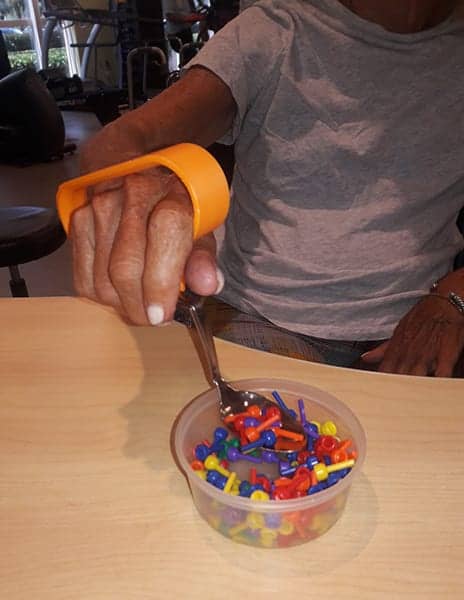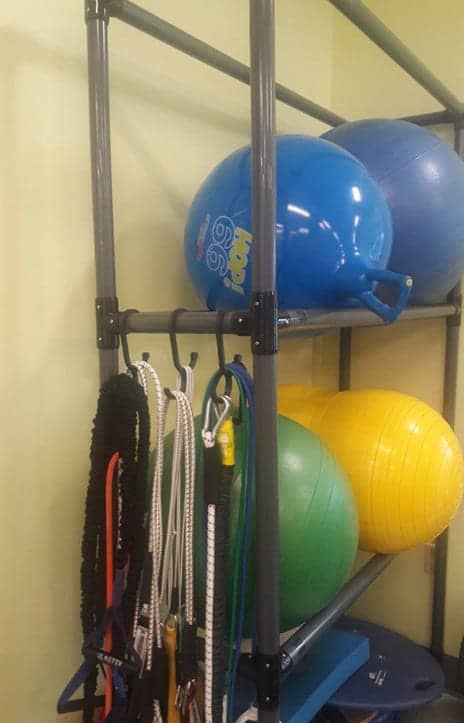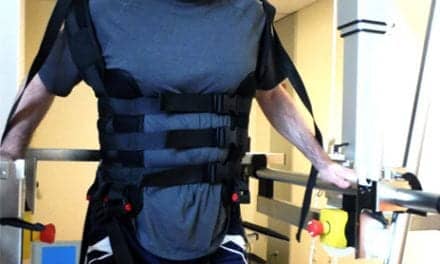by Sandra Salinas
Cynthia Kretmar woke up from five-level spinal fusion surgery only able to move her eyeballs.
A year later, she is able to feed herself, walk with the aid of a walker, and “see the light at the end of the tunnel.”
The 69-year-old former marathon runner and yoga instructor has been dedicated to physical and occupational therapy at Memorial Hospital Miramar (Miramar, Florida), but credits her return to a higher level of independence to a machine that hums softly in the corner of the therapy gym.
It’s a 3D printer, and we’ve used it to create everything from a finger orthosis to an adaptive aid to tools used by therapists in our clinics. For Ms Kretmar, customized devices have enabled her to eat, open a refrigerator, brush her teeth, write with a pen, and use the phone, all without assistance.
“You realize how alone you are when you can’t do the basic functions of life,” she says. “This technology has been instrumental in my recovery, psychologically, physiologically, and emotionally, and has helped me get on with my life.”

Spinal fusion patient Cynthia Kretmar says that use of 3D-printed functional items have helped give her a sense of independence and greater control of her recovery.
3D printing is an emerging technology for rehabilitation clinics. A model is created using computer assisted design (CAD) software or can be selected from a web-based 3D printing share site. The file is then uploaded into the printer-compatible slicing software, adjustments are made, and printing specifications are loaded into the machine. The printer pulls material from a spool of filament onto the print bed using back and forth movements, slowly pulling upward to create the three-dimensional object. With a little bit of finishing, the model is ready to be used.
Our occupational therapists have been specially trained to customize orthotics for patients. For Ms Kretmar, the small size of her hands required that. The 3D model can be made in a few hours for patients unable to use what is commercially available, and they can even select its color.
For our youngest clients, 3D printing allows the therapist to trial therapy equipment. Pediatric OT Kristian Porco printed a model of a fidget toy that changes from a cube to a star (designed by Mathgrrl on thingiverse.com). She gave this to a boy to help occupy his hands and help him focus, making waiting in lines a more manageable task.
We’ve also used our 3D printer to create functional items at the clinic. In our therapy gym, hanging exercise cords were always getting tangled, so we took the model of a hanging hook (made by Muzz64, also at thingiverse.com) and enlarged it on the slicing software. Now, all our cords are organized and easier for therapists to select.
For Ms Kretmar, the results have been much more significant. “I’ve been given a sense of independence and greater control of my recovery. These devices turned the light bulb on for me, gave me hope, and helped me see there’s a way to do everything I need to do.”








